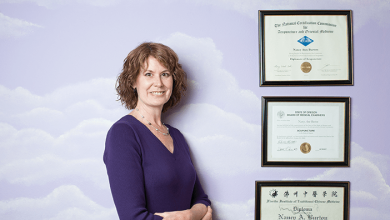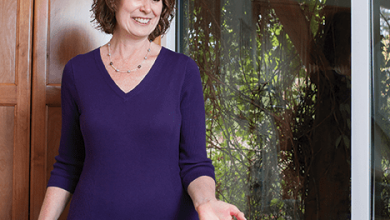Understanding Digestion
As I have mentioned in previous articles, digestion is the foundation of health. If digestion isn’t working properly the rest of the body isn’t going to get the nutrients it needs to function and heal. A failure in digestion is usually the first domino to fall in a long series of health problems. By understanding digestion you will have a better idea of what helps or hinders it.
The first stage of digestion happens in the mouth. Chewing food into liquid introduces digestive enzymes from the saliva. This breaks down food into manageable pieces, getting it ready for the stomach. Drinking water with meals dilutes those digestive enzymes, impairing the first stage of digestion. Drinking with meals also encourages people to wash down chunks of food, swallowing them like pills, instead of taking the time to chew enough to adequately prepare food for the next stage of digestion, in the stomach.
There are veins, under the tongue, closer to the surface than anywhere else in the body. While chewing, some nutrients go under the tongue, through these veins, and into the bloodstream. This is how the body knows it’s getting the nutrients it needs, and can then indicate when it has had enough, so you stop eating. So chewing your food well can actually help you lose weight.
On the opposite side of the spectrum, studies have shown that when people are starving, the ones who chewed their food until it’s liquid, and then some, were the ones to survive. Those who gobbled their food, swallowing it in chunks, so it had to go all the way through the digestive system before extracting nutrients, were the ones who didn’t make it. This illustrates what an essential part of digestion chewing is.
The stomach is located just under the chest, the soft spot where the ribs meet in a downward V. When people say their stomachs are bothering them, they are usually referring to the abdomen, below the belly button, where the small intestines are located.
Once the food moves down the esophagus to the stomach, it is broken down further with digestive enzymes and HCL (Hydrochloric Acid). As we age, we often don’t have as much HCL as we did when we were younger. This explains why people might have been able to eat things when they were younger that they can’t in later years. For those with reduced HCL, a little Braggs Apple Cider Vinegar, mixed in water and taken while eating, can aid digestion by adding more acid to the stomach.
On the other hand, drinking plain water with meals, especially cold or ice water, impairs digestion. It dilutes the digestive enzymes and HCL necessary to break down food in the stomach. The first thing the stomach has to do is warm everything up to a 98 degree soup. Eating cold food, with or immediately following a meal, interferes with this important step. Room temperature or warm food is easier to digest. Cold food should be eaten away from other food, or eaten with hot food to counteract the effects, such as hot soup with a small side salad.
Acid regurgitation, heartburn (which sometimes mimics a heart attack), stomach ulcers, a ‘sour stomach’ are all indications of not enough stomach acid. Taking antacids, or anything that inhibits the acid in the stomach, might temporarily treat the symptoms and make you feel better, but it is stopping an essential part of the digestive process. The acid is necessary to break down food, preparing it for the next stage of digestion.
If vinegar or other foods burn the stomach or cause pain, it could indicate ulceration of the stomach lining. When people have stomach ulcers I prescribe supplements to heal the stomach lining and then supplements to increase the acid in their stomach. This treats acid regurgitation, heartburn, ulcers and other stomach problems by healing the root of the problem, as opposed to just treating the symptoms, further impairing digestion, and setting up the scenario for a series of health problems in the long run.
The next stage of digestion is when food moves from the stomach into the small intestines, where food is broken down further, and the nutrients extracted. The pancreas secretes enzymes, to continue breaking down food in the small intestines. The liver creates bile. It places toxins filtered from the blood into the bile. The bile then moves into the gallbladder, which condenses and stores the bile. When we ingest fats, the gallbladder secretes bile into the small intestines to break them down. Bile also breaks down phlegm in the body. So if you have problems with mucous, a recurring runny nose, allergies, sinus problems, if you snore, have sleep apnea, have cysts, fibroids, or tumors (which are considered congealed phlegm in Traditional Chinese Medicine), then you might need some help with your gallbladder.
They call it the small intestines but it takes up most of your abdomen. By the time you are an adult is typically about 32 feet long. The large intestines are much shorter but larger in diameter. If your food isn’t breaking down in a timely manner and is sitting in your small intestines rotting or fermenting, it will cause gas. This can initiate abdominal bloating and discomfort and/or flatulence. To address the problem it is necessary to determine whether it is the fats, protein, or starches that the body isn’t breaking down.
Once food is completely broken down in the small intestines, the nutrients are extracted and move through the intestinal wall and eventually into the bloodstream. The blood then distributes the nutrients to all parts of the body. If any of the stages of digestion are impaired it can hinder the delivery of these essential nutrients and eventually result in a series of health problems.
Lining the wall of the small intestines are microvilli, which look like microscopic fingers. They hold the whole food particle until it is completely broken down and just the nutrients pass through the intestinal wall.
The microvilli are the fastest regenerating cells in the body. They regenerate every 20 minutes. The catch is, they need positive bacteria to regenerate. If there isn’t enough positive bacteria you can end up with holes in the gut lining, or Leaky Gut Syndrome. If a whole food particle, with the waste still in it, passes through these holes in the intestinal wall, bells and whistles go off. Poof! Abdominal inflammation slows down the food particles in an attempt to prevent them moving throughout the body in the blood stream before the white blood cells can rush to the site to neutralize the waste (pathogens). When the waste from the small intestines enters the bloodstream and is distributed around the body, it can cause inflammation and pain in various places, including the joints. This can be a major contributing factor in fibromyalgia, arthritis or other chronic body pain.
Leaky Gut Syndrome is what initiates food allergies. The body remembers what hurt it, the whole food particle in the bloodstream, and takes protective measures in the future. Food allergies can be resolved as the Leaky Gut is healed.
After the nutrients are extracted, the waste and water move from the small intestines to the large intestines where the water is extracted. The waste is then flushed out of the body in the stools.
This is a brief overview of digestion. These and other problems with digestion can be effectively treated with herbal supplements, nutritional adjustments, and acupuncture.
I will be offering a free talk, with visual aids, for a more in-depth discussion of digestion, Monday, March 14th, at The Haven (1970 Faith Street, on the corner of Faith and Ashland St.), from 7:00 to 9:00. There will be a question and answer period after the talk.
Hope to see you there.
Health & Happiness,
Nancy Burton, L.Ac.
534 Washington St.
Ashland, OR 97520
(541) 646-0134


